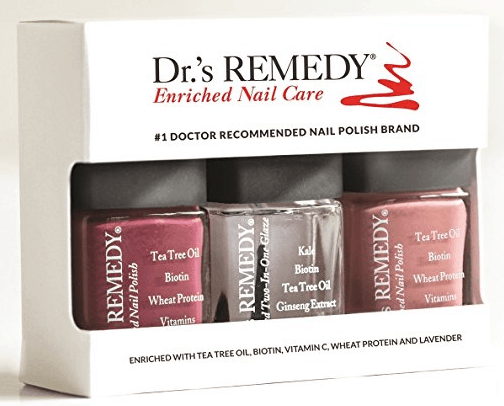How to Identify Organic Turmeric
Organic Organic Organic! It is the most common words used in this generation, as most people are having conscious about organic (or natural) products for their healthy living, which is good but most of the manufacturers are using this word to trap people for buying their products.
We all know those products which are labeled as organic are expensive rather than the normal one. So, before buying that product, make sure to check whether it is a perfectly organic product or not.
Almost everyone believes that it is an organic product if labeled like that on the packet manufactured by some herbal company but no one wants to know how it is organic and in what way they labeled it.
Here in this article, we will help you in not to fall into the trap of an organic product. Let’s have a look to know what makes turmeric organic and what you have to take into consideration before buying genuine organic turmeric.
Before going to the article, let’s know what is organic turmeric?
Well, the answer is simple – a turmeric which is grown in a soil where there is no use of any artificial pesticides or manure, etc. The farming of organic turmeric will depend on the biological pest control techniques or manures (compost), etc. rather than spraying harmful pesticides (which may enter into our body to cause various health issues).
In general, organic farming depends on some methods like crop rotation, predatory beneficial insects, salinity control of soil, turning soil after crops, etc. to make the crop grow weed free without any pesticides. Here the manure is also a natural, as the farmers use green manure or compost to make the crop healthy.
The most important thing is that it is not an easy task to carry out these organic farming in today’s modern world of easily accessible chemical manures and pesticides. So, this makes a big difference in raising the price of organic products (expensive) than the non – organic products.
How to Identify the Organic Turmeric?
Contents
It is a crucial step to know the genuine organic turmeric powder before buying. Generally, while we are buying other products we will check whether it cleared the independent quality standards or not. The same you have to follow in the case of buying organic turmeric also.
Check the turmeric which you plan to buy has been certified as an organic by a well-known and reputed third party or independent agencies (like USDA certification in the US, NASAA certified organic or Australian certified organic in Australia). So, buy the products which are certified under these agencies, as they assure you it’s tested and safe to use.
Also, remember to check the institute which giving certification, as the reputation of certification institute is also matters as much as certification. However, there are some cases in which the product may not be certified as organic even though it is organic like products grown in the nearby farms, which you can check and buy it easily.
Want more clarity then here we are mentioning some important but simple ways to identify the organic turmeric and its products.
Other than checking the certification, you have to consider other aspects while buying organic turmeric. Let’s have a look at these tips.
- Avoid buying powder and supplement forms of turmeric, as they have fillers and additives in them.
Stop buying turmeric supplements which contain magnesium state (or stearic acid), as it is potentially toxic in nature. Also, another harmful ingredient present in this turmeric supplements is Dibasic Calcium Phosphate (DCP). So, avoid taking turmeric supplement.
Remember that the turmeric capsule should not be gelatin – based one but should be vegetable based to prevent health problems, as most of the capsules are gelatin based.
The best thing is that if the product can meet international standards set for food safety like hazards and critical control points (HACCP), ISO certification for safety and quality, safe quality food (SQF), good manufacturing practices (GMP), kosher food certification, International organic certifications (USDA, EU or NSOP)etc.
How to Test Turmeric Powder for Quality and Avoid Adulterated Products?
There are 2 common ways to adulterate turmeric powder. This is another important step to be followed while purchasing turmeric.
Adding Fillers – Adding fillers like sawdust, starch, rice flour, etc. in turmeric may or may not have any nutritional value but it may result in harming your health in the longer run.
Use of Color Dyes – Usage of these dyes to the fillers will give traditional turmeric color. In general, the manufacturers use metanil yellow color and lead chromate commonly and this will cause some negative impact on the nervous system of the body and may result in causing cancer.
So, just by looking, we can’t find out the difference between genuine and a non – genuine turmeric. So, won’t get into the trick of manufactures and buy unhealthy or non – genuine turmeric products.
Now, let’s know how to identify the genuine turmeric powder.
Most of the people like our parents, grandparents can easily differentiate the genuine and adulterated by looking, rubbing, smelling, tasting, etc. however, it’s hard to describe the process as it will come through experience but we can also test it with the help of some scientific ways.
How to Test Turmeric for its Artificial Color:
Here is a list of tests that help you to identify the artificial colors in turmeric.
Test – 1: (Metanil Yellow)
First, take 1 teaspoon of turmeric powder in a glass flask or test tube. Add few drops of concentrated hydrochloric acid (HCL) to it. If it appears in pink color instantly and disappears after adding some water then this turmeric doesn’t have any artificial color.
But if you observe that the color remains then it has an artificial color called metanil yellow mixed. Some people who go through this experiments can also mentioned that use lemon instead of HCL to test the use of metanil yellow in turmeric.
Test – 2: (For Lead Chromate)
Take some turmeric as a sample and ash the turmeric. Collect this turmeric ash in a test tube and mix sulphuric acid in 1:7 ratio. Stir well and filter the mix into another flask/beaker (in general the ash will remain in the filter and the liquid will come down).
Finally, add few drops of 0.1% dipenylcarbazide into the solution and if it turns to pink color then it is an indication that this turmeric has lead chromate.
Tip – Handle the concentrated HCL and sulphuric acid with extreme care or else it causes irritation and other discomforts.
Test – 3: (Turmeric Chalk Powder Test)
This test is same as HCL test. Simply take some turmeric and add it to test tube along with some water. Then add few drops of concentrated HCL to this test tube. If you observe any effervescence then there is a presence of chalk powder in turmeric. You can also use it to test turmeric for the presence of yellow soapstone.
Water Test for Chalk Powder in Turmeric – This is another easy test to be done quickly to find out that there is a chalk powder added in the turmeric or not. Take 1 glass of warm water in a clear glass and add 1 teaspoon of turmeric powder on its surface.
Don’t stir the mix and let it sit for about 20 minutes. You will see the chunks of turmeric powder will settle at the bottom of the glass and the chalk powder will make the water cloudy by floating over it. If you observe sediment at the bottom but the water is clear yellow then there is no chalk powder in the turmeric.
Test – 4: (Microscopic Test for Starch Presence)
In most cases, the manufacturer’s use the starch of rice, wheat, maize, etc. to turmeric powder. So, use a microscope to test whether the turmeric which you’re buying contains starch or not. Turmeric looks like yellow, big and angular particles under a microscope and these starch particles will look small and colorless.
What to do if don’t have HCL or Sulphuric Acid?
While most people can perform the chalk test but only rare people will have access to test the turmeric using HCL or Sulphuric acid. So, the question that arises immediately is if I don’t have these chemicals to test the turmeric then what I have to do.
Don’t worry, there are few things which you can still do to test your turmeric to know whether it is genuine or not.
In case if you want to buy turmeric in bulk quantities then ask your turmeric supplier to do these tests for you, prefer to do it in front of you from a random sample or else ask them for the test reports which will ensure you the good quality stuff to you.
In case, if you buy in small quantities then go for brands which are certified as the best quality and organic. Choose the best and use that turmeric brand regularly for best health and beauty benefits.
Also, remember that these tests may or may not applicable for supplements, as they contain additional ingredients that may interfere with the above-mentioned tests but most of the quality certifications will help you in choosing the good quality supplement.
Final Word:
The only thing you have to follow the above-mentioned aspects while buying organic turmeric. The most of these brands may not qualify the tests but check all the aspects before buying. The best organic turmeric will provide the best health and beauty benefits.
Do you know any other successful methods for identifying organic turmeric? Then share your experience with us in the below comments box.
Source link wallx.net






